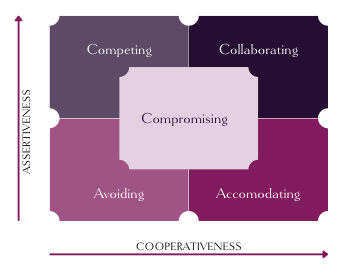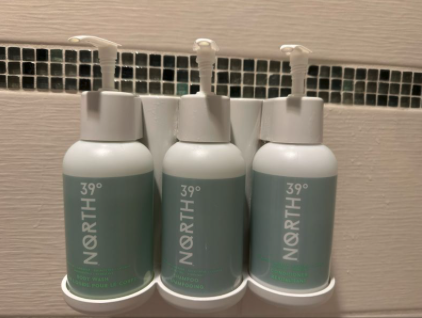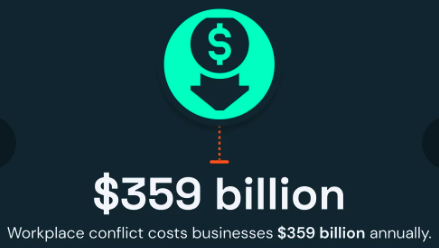There is a major lesson for the future of work happening in the Middle East right now.
We have lived our whole lives with war and terrorism. So much so that we have created a line that says war should be respectful of innocent human lives. We should not bomb schools or hospitals because that’s “inhumane.” If you cross that line you are a terrorist and are not “fighting fair.”
By creating this line we are accepting that war and violence is a normalized part of the human condition.
Please keep this global socialization in mind as I segue to the workplace because our desensitization to the value of human life and acceptance of violence comes with us to work.
Every day people at work put their mental and physical health at risk in jobs around the globe. I’m not being hyperbolic (okay, maybe just a little) I am being as factual as possible.
I am also not minimizing the atrocity of those currently dying in Ukraine, Israel or elsewhere at this very moment; I am instead offering an olive branch to those of us who are feeling hopeless and useless in the wake of this violence.
The impact we can have on stopping pervasive inhumanity begins with our daily actions at work.
It starts with little things that we can observe, call out, and stop in both ourselves and others, such as:
– Yelling at or around employees
– Disrespecting their personal time
– Minimizing their contributions or questions
– Allowing biases to impact our decision-making
– Passively, or actively, inhibiting someone’s career progression
– I’m sure you can come up with other examples
And most importantly, not allowing differences in political views to hide hatred. Not allowing people to hide under the banner of “freedom of speech” when they use words that rob someone of their humanity because of how they look, where they were born, or who they worship.
Should we really have to come to work each day ready to fight?


My targeted tone for this newsletter is usually one of wisdom and empowerment; I stay away from self-righteousness or preaching how you can be a better person. I prefer to encourage you to be a truer version of yourself, not some ideal as myself or others define it.
So my suggestion for each of you is that if you’re struggling to make sense of the horror in the world right now, if your empathy and outrage are paralyzing you then start with micro-kindness. Look for opportunities to reverse the downward spiral of humanity in whatever small way possible.
Not fake niceness, that doesn’t serve anyone, but real respect for our fellow humans. If you find yourself currently wishing for violence or revenge, I don’t blame you, but I do invite you to inquire as to whether that is a path to ending the cycle of inhumanity.
From the Executive Maven Toolkit
This issue’s tool is the Thomas-Kilmann Conflict Modes Instrument which I didn’t develop but I use often.
As an authorized partner of the Five Behaviors methodology I believe that the best teams engage in an unfiltered, constructive debate of ideas — what we call healthy conflict.
There are five different conflict modes and while we have a default preference we can also adapt to partner with our colleagues in ways that transform conflict into results.
For example, I’m a natural collaborator but I have learned that this style can sometimes be slow to achieve results so I learn a great deal from compromisers who help me prioritize what’s important and not “sweat the small stuff!”
Take a look at this simple tool and see if you can plot both yourself and your teammates.


From Elizabeth on LinkedIn
My most popular post in the last two weeks was about inclusive product design and my frustration trying to read the bottles in my hotel shower. If you missed it you can see the post and take your own version of an eye test here!


I’m also sharing the results of my poll about your phone Lock Screen image. I bet someone that more people would have a person or animal than an inanimate image on their Lock Screen.
Thankfully I didn’t bet on the actual percentage. Even though my Lock Screen is a landscape I was sure that 75% of people would have people or pets.
Although I technically won the bet I do realize that my survey was flawed as not everyone has a pet to select from and in all the “other submissions” there were a lot of inanimate images.
Thanks to all of you who voted and shared screen shots of your Lock Screen!


Research and Expert Resources
Keeping with our theme of conflict, here are some fascinating statistics about conflict in the workplace. (Not the healthy kind of conflict that results in the best idea generation of course!)
- Workplace conflict costs businesses $359 billion annually.
- 85% of employees experience conflict in the workplace.
- 76% of employees prefer to avoid conflict when possible.
Human Resources plays a significant role in conflict resolution and they are largely of the opinion that we as managers and employees could do more to reduce conflict.
- 77% of HR professionals believe that employees could prevent conflicts in the workplace.
- 60% of HR professionals believe that workplace conflict is due to bad management.


Links and Resources
I am suspending sharing any business links for this issue.
Click here to support Save the Children in Israel and Occupied Palestine.

